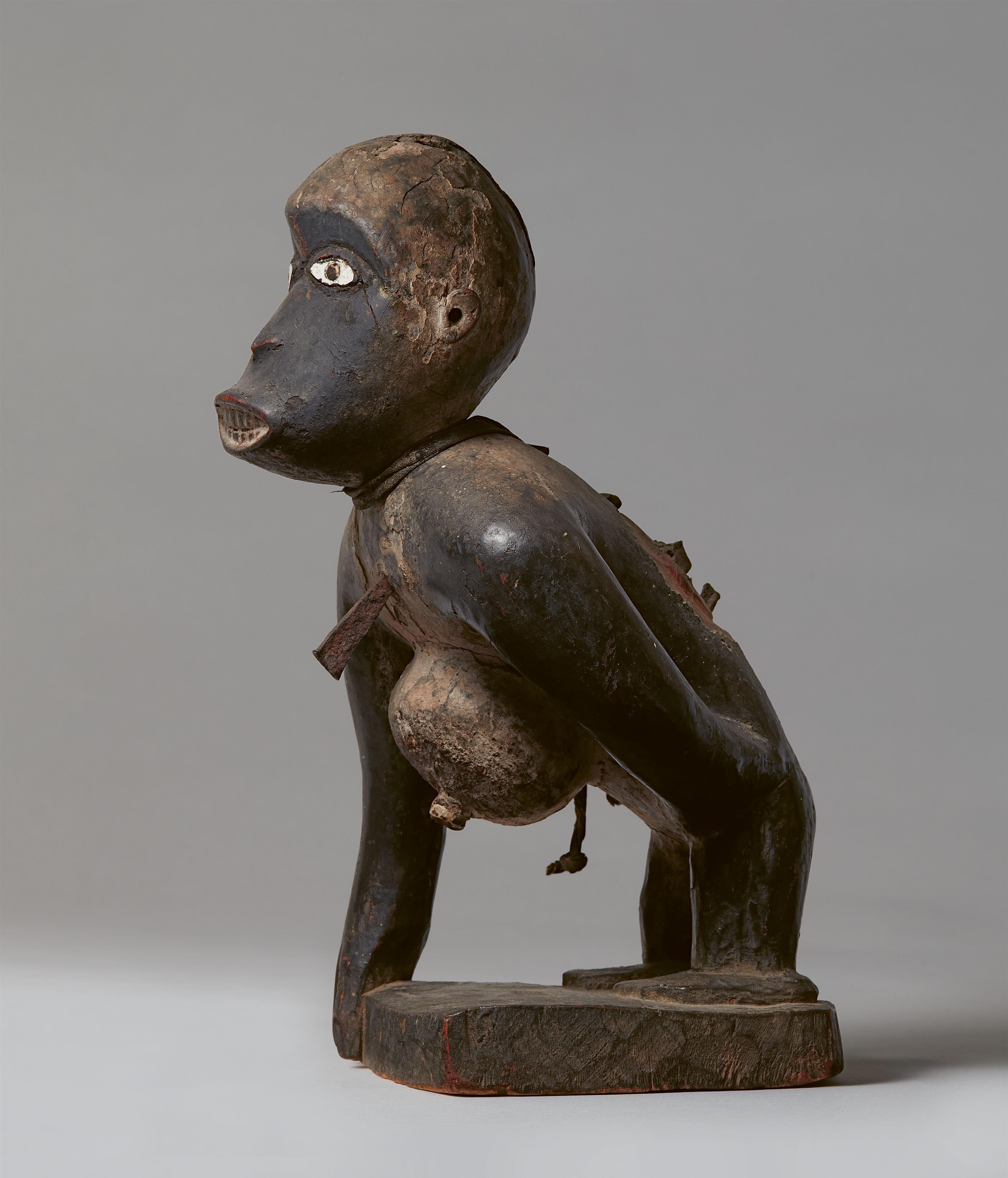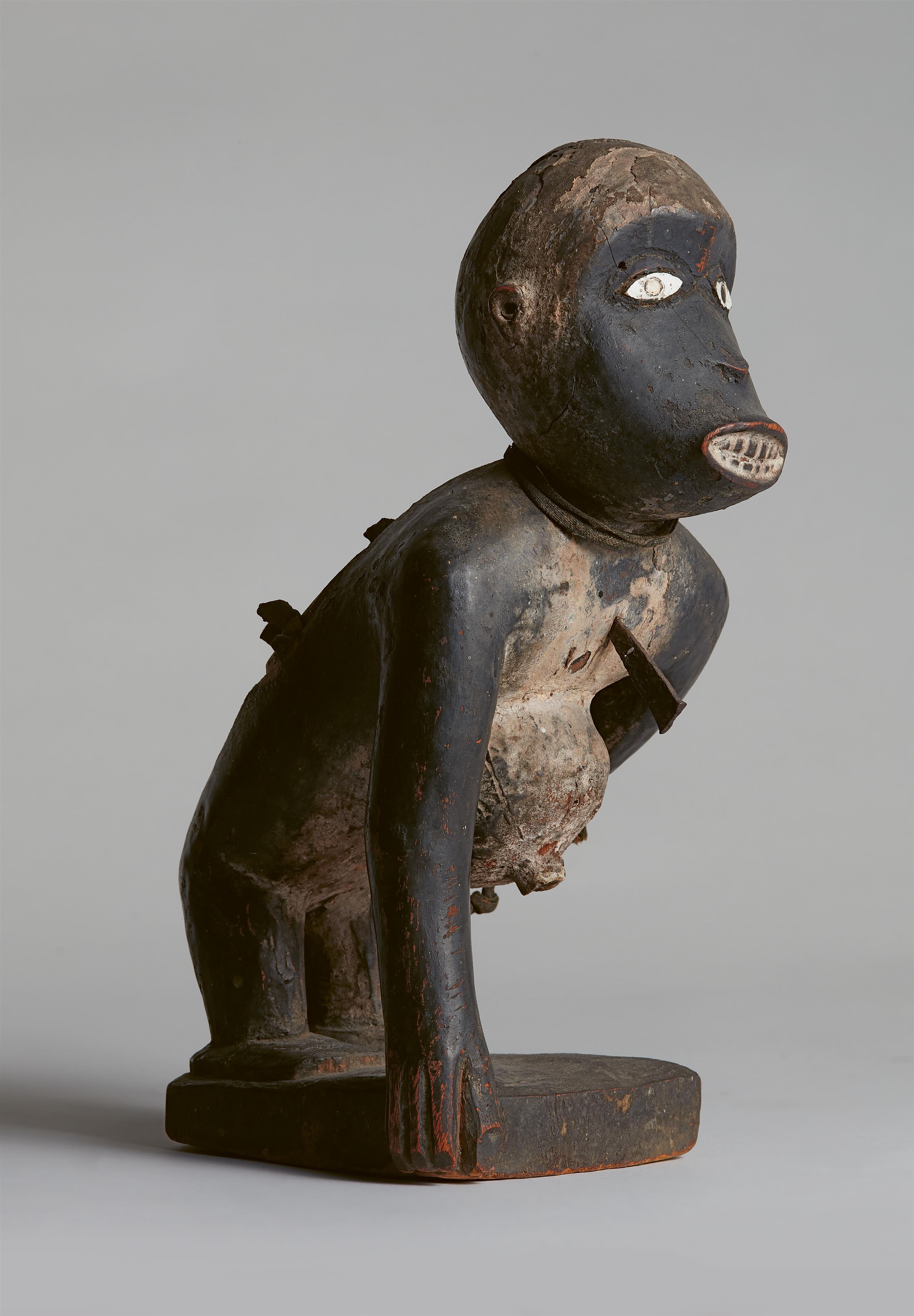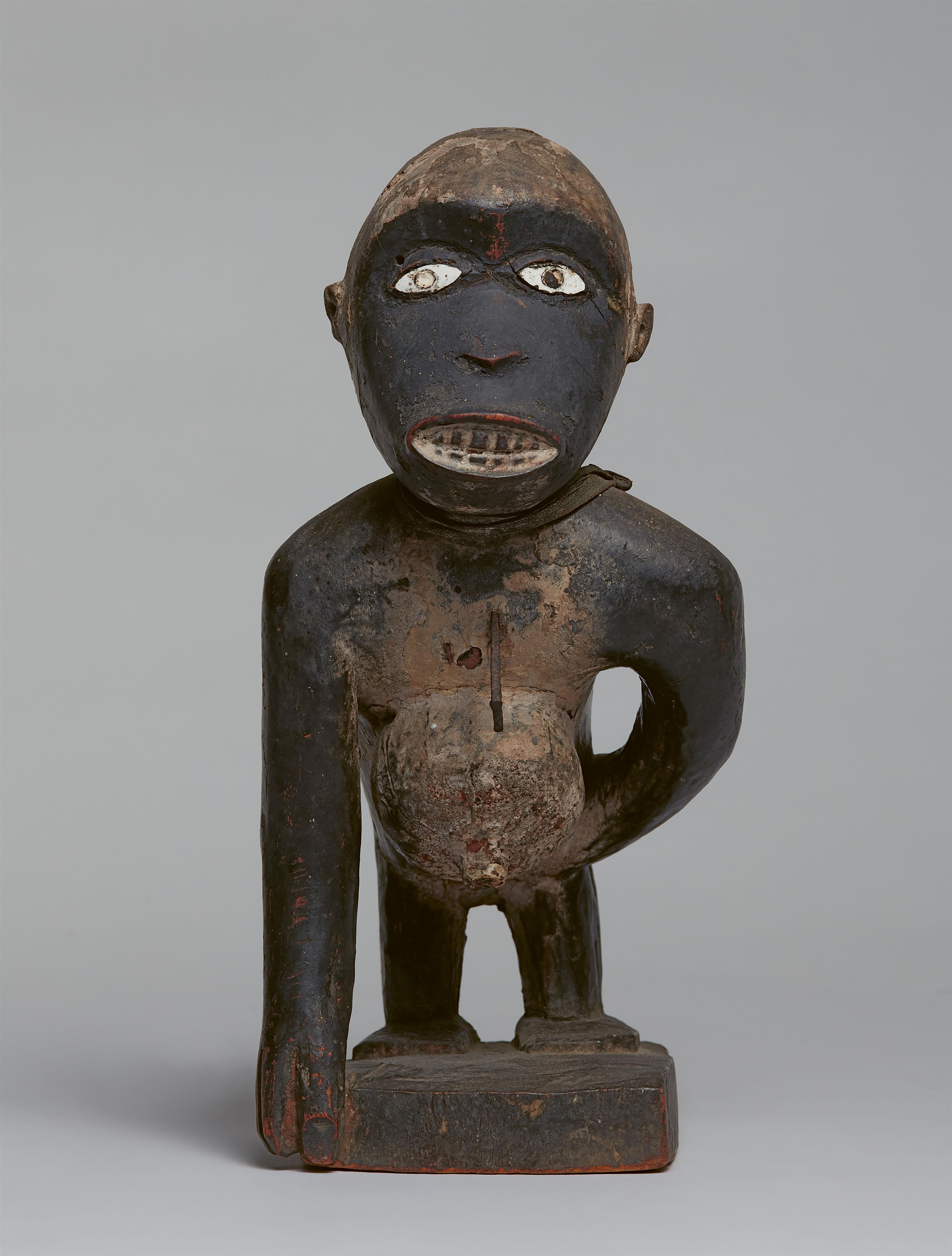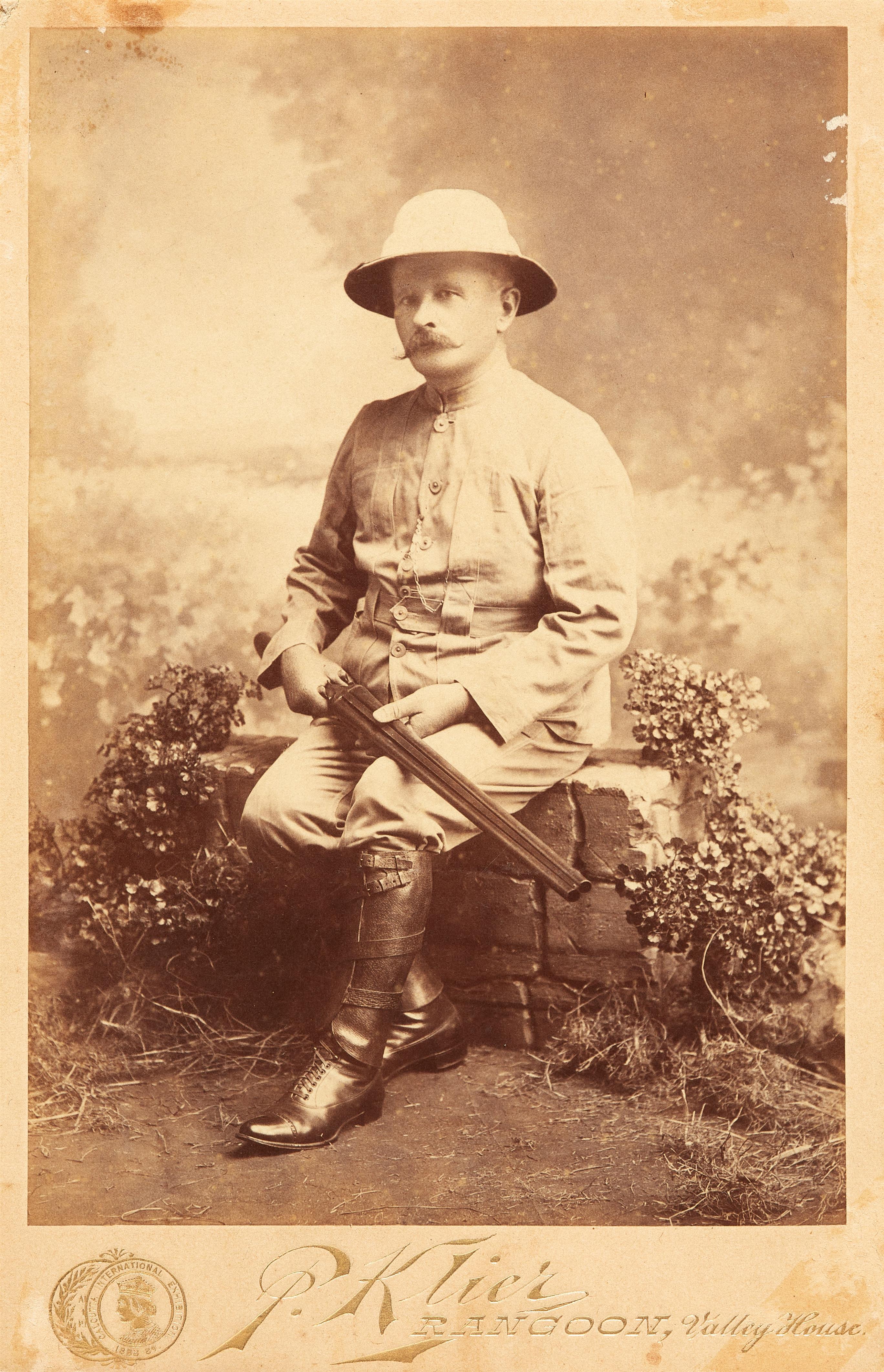KONGO ZOOMORPHIC POWER FIGURE
Nkisi
Democratic Republic of the Congo
27 cm. high
Wilhelm Micholitz, born in Saxony, had a keen desire to work for “The Orchid King”, Frederick Sander, a fellow German by birth, but living in St Albans where he presided over one of the greatest orchid nurseries in Europe. “Please forgive my eagerness but for many years it has been my strong desire to join your firm” Micholitz wrote from Tottenham in in 1882. His persistence paid off and in the same year he was sent on his first expedition to the Philippines. He would continue in Sander’s employ, until 1914. The many letters he wrote to his employer from his travels over thirty years have survived and are a fascinating window into to the arduous and perilous work of an orchid hunter in the Victorian era. Competition was fierce so secrecy concerning travel plans was essential and the challenge of ensuring plants arrived home in good condition was colossal. The quantity of plants lost whilst awaiting shipment, that died during the long transit to England, or were lost in shipwrecks was enormous.
Almost all Micholitz’s trips in search of orchids were to the east – the Philippines, the Aru Islands, Maluku, New Guinea and Sumatra to name but a few. In 1885/6 he did make one trip to Africa which is rarely referred to in biographical texts, perhaps mainly due to its lack of success.
On 28 July 1885 he writes to Sander from Liverpool from where he was about to embark on the trip but first needs to buy a tent. On 15 September he is in Banana (at the mouth of the Congo River)
“Here the vegetation is very poor. The terrain is hilly and covered with grass 10-15 ft high, which is burnt down once a year by the natives. No chance of orchids here. In the close vicinity of the river, there is forest, but from there to Stanleypool the area is dry and nothing but grass can be found there. I don’t think it will be worthwhile to go to Stanleypool. I shall therefore limit myself to searching the lower Congo, then as soon as possible go to Loango and up the Kwilu river which has very rich vegetation. Later I shall travel to the Ogowe.”
His fortunes had not improved by 13 October when he writes from Boma –
“I have carried out my stated intent to travel up the Congo river until Vivi, but I cannot report good results.
Between Banana and Boma there is some vegetation, but nothing other than Lissochilus giganteus, which I have not collected thus far. I also found 2 or three parasitic orchids, one of which looks like a Bulbophyllum but has very small flowers. Otherwise, there was nothing……”.
Two weeks later -
“Tomorrow I shall depart from here with 20 people to go to Quilo and I shall arrive in Luango within 2 or 3 months. I hope to find something good.”
On 18 April 1886 Micholitz writes from Loango
“I received your letter a few days ago and was pleased to hear that you want me to return to Europe. Here there is nothing to be done, especially with regard to orchids. I have spent nearly 6 weeks beside the Quilon river, yet apart from a few bouts of fever, I have achieved nothing of note. Despite an abundance of vegetation I discovered only 2 insignificant orchids, and it was not worth picking them off the trees. Unfortunately I did not find the Angraecum.
My health is in a very bad state. I have had a fever for the last 3 days and my head seems to want to part company with me. I have just taken 18 grains of quinine, because I have 20 people here and tomorrow, come what may, I intend to start an exploration into the centre to collect the variegated Philodendron and the Costus. In 12 to 14 days, unless I die, I shall be back and will depart for England on the 14th, 15th or 16th May.”
Although his African trip was not a great success, Micholitz proved to be one of Sander’s most successful plant hunters. He returned from his final trip in 1914 by which time Sander & Co was in considerable financial trouble and Frederick Sander’s health was failing. Micholitz retired to Saxony shortly before the outbreak of the First World War. With his savings invested in government funds which became worthless after the end of the war in 1918, he lived the rest of his life in relative poverty.
Micholitz’s name would be perpetuated in his many finds; Aerudes micholitzii, Phalaenopsis micholitzii, Coelogyne Memoria Wilhelm Micholitz, etc.
Micholitz can perhaps best be summed up in the words of Arthur Swinson in Frederick Sander: The Orchid King, (London, 1970, p.82)-
“There are few men whose spirit is conveyed powerfully in everything they write, even on the most mundane matters, and Micholitz was one of them. From these scribbled letters on poor paper, often smudged by the jungle rains, his personality emerges with astonishing clarity and force. Obviously he was a man of enormous integrity, energy and loyalty; a man of knowledge and vast experience in his chosen field. At the same time he was ill-starred and knew it; the great prizes of life would always elude him. But he struggled on with dogged courage, occasionally protesting against the arrows of misfortune, or the careless neglect of the firm of Sander & Company, but always doing his duty as he saw it.”
Illustration : Portrait of Wilhelm Micholitz by Philip Adolphe Klier, Rangoon, circa 1888
Provenienz
Collected by Wilhelm Micholitz (1854–1932), orchid hunter, 1885/6








